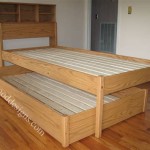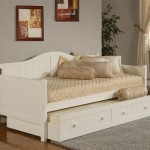Essential Considerations for Raised Garden Bed Placement
Raised garden beds offer numerous advantages, but their placement requires careful consideration. One crucial aspect is whether or not to place anything beneath the bed. This article explores the essential aspects of what to put under a raised garden bed, providing valuable insights to ensure successful plant growth and soil health.
Determining the appropriate materials or layers to place under a raised garden bed depends on several key factors: soil drainage, weed suppression, pest control, and soil amendment enhancement. By understanding the roles of these elements, gardeners can make informed decisions that optimize plant growth and garden productivity.
Soil Drainage
Good drainage is essential for healthy plant growth. When soil becomes waterlogged, roots can rot, and plants can suffer. If your garden has poor drainage, you will need to create a drainage layer beneath the raised bed. This layer can be made of gravel, crushed stone, or even old bricks. The drainage layer will allow excess water to drain away from the roots of your plants.
Weed Suppression
Weeds can quickly take over a garden bed, especially if the soil is not properly prepared. To prevent weeds from becoming a problem, you can place a weed barrier beneath the raised bed. Weed barriers can be made of landscape fabric, cardboard, or even old newspapers. The weed barrier will prevent weeds from germinating and growing in your garden bed.
Pest Control
Some pests, such as slugs and snails, can damage plants in raised garden beds. To deter these pests, you can place a layer of diatomaceous earth or copper mesh beneath the raised bed. Diatomaceous earth is a powder made from the fossilized remains of algae. It is sharp and can kill pests by dehydrating them. Copper mesh is also effective at deterring pests because they dislike the feel of it.
Soil Amendment Enhancement
In addition to drainage, weed suppression, and pest control, you can also use the space beneath a raised garden bed to improve the soil. By adding organic matter such as compost or manure, you can increase the fertility of the soil and provide nutrients for your plants. You can also add specific amendments, such as bone meal or blood meal, to provide additional nutrients that your plants may need.
Conclusion
Deciding what to put under a raised garden bed is a key step in ensuring its success. By considering the factors of soil drainage, weed suppression, pest control, and soil amendment enhancement, gardeners can make informed choices that optimize plant growth and garden productivity. With proper preparation and attention to these essential aspects, raised garden beds can provide a thriving environment for a bountiful harvest.

What Do I Put On The Bottom Of Raised Beds Beginner S Garden

What Do I Put On The Bottom Of A Raised Garden Bed 4 Things

5 Best Materials To Put Under Raised Garden Beds The Ground Guys

What Should You Put On The Bottom Of Your Raised Garden Bed

What Do I Put On The Bottom Of Raised Beds Beginner S Garden

9 Things To Put At The Bottom Of A Raised Garden Bed Gardening Channel

Guide To Raised Beds Plans Timing Tending Gardener S Supply

9 Easy Diy Raised Bed Gardens

Raised Bed Garden From A Z What To Know Joe Gardener

What Should You Put On The Bottom Of Your Raised Garden Bed







